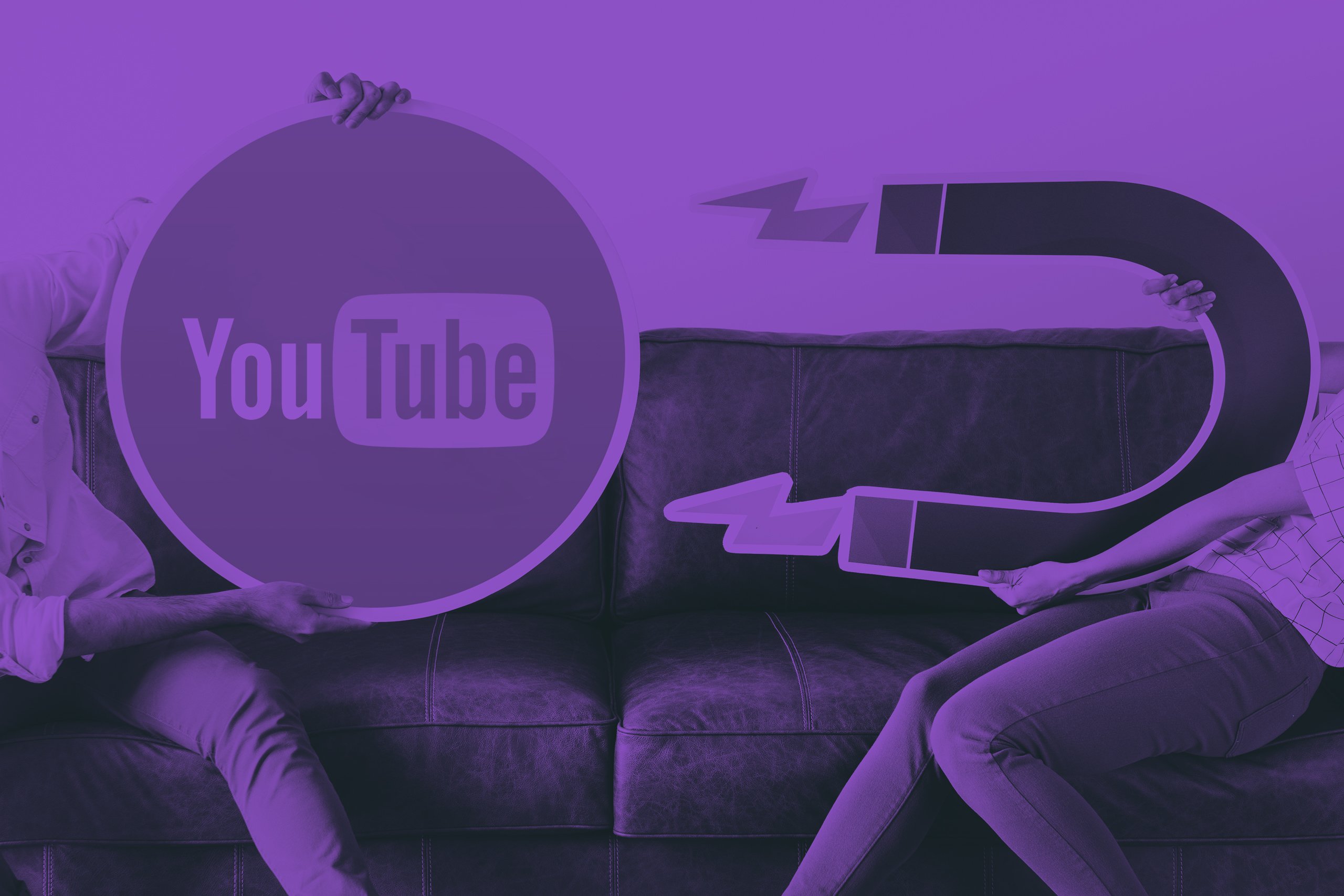Over the past few years, I have created a lot of content about the issue around scaling Google Ad campaigns. The pain is real, and after having personally managed millions of dollars of ad I have seen all sorts of issues related to scalability on the Google Ads platform.
Now when it comes to scaling YouTube Ads, similar issues can crop up:
- Bidding strategies
- Creatives
- Lead scoring
- Exclusions
- Etc
In this article I will dive into 10 tips to help you scale your YouTube Ads, with that being said, it can be gnarly out there! So if after reading this you still have doubts, head over to our contact page and boom, get your free audit with either myself or one of my team.
Growing Business With Succesful YouTube Ads
So you are most likely here because you want to grow your business with YouTube ads, right? In this article we will learn how to create engaging and effective YouTube ads that will attract, convert, and retain your target audience. Avoiding the common mistakes and pitfalls that can ruin your chances of winning with YouTube ads.
10 Tips For Scaling Successful YouTube Ads Campaigns
Let’s dive into 10 tips for running and scaling a successful YouTube ads campaign that can help you achieve your business objectives. Whether you are a beginner or a paid media expert, you’ll find valuable and practical advice that you can apply to your own YouTube ads campaign.
Running a successful YouTube ads campaign is not as easy as it sounds. You need to plan, create, launch, and optimize your campaigns carefully to get the best results and ROI. You also need to avoid some common mistakes and pitfalls that can ruin your campaigns and waste your money.
Tip #1: Define Your Goals and KPIs
Define your goals and KPIs according to the context you operate in. Make sensitive choices when setting benchmarks. Don’t set goals and KPIs based on other people's metrics or benchmarks. Use industry-sensitive data and rational averages to set your goals.
This first tip for running a successful YouTube ads campaign is all about, the identification and definition of your goals and key performance indicators (KPIs). You need to know what you want to achieve with your YouTube ads and how you’ll measure your success. This will help you choose the right ad format, targeting options, budget, and bid strategy for your campaign.
Some common goals for YouTube ads are:
- Brand awareness: To increase the visibility and recognition of your brand among your target audience.
- Getting more eyeballs on your brand: offer, service, products, etc.
- Consideration: To generate interest and curiosity about your product or service among potential customers.
- Creating a need or establishing an obvious pain point
- Action: To drive traffic, leads, or sales from your YouTube ads to your website or landing page.
- Driving leads, purchases, signs ups etc. (This goal and brand awareness are the most commonly used goals in our campaigns and experience)
Some common KPIs for YouTube ads are:
- Views: The number of times your ad was watched by users.
- Impressions: The number of times your ad was shown to users.
- Clicks: The number of times users clicked on your ad or call-to-action button.
- Conversions: The number of times users completed a desired action after clicking on your ad, such as signing up, downloading, or purchasing.
- CPA: Cost per action or cost per acquisition.
- CPL: Cost per lead. This could be for a free piece of content, webinar registration or booked call, for example.
- Revenue/ROAS: The amount of money generated from your ad campaign over your Ad spend
- On-page conversion rate.
You should set SMART (specific, measurable, achievable, relevant, and time-bound) goals and KPIs for your YouTube ads campaign. For example, instead of saying “I want to increase my sales”, you should say “I want to generate 100 sales from my YouTube ads campaign in the next 30 days”.
Tip #2: Know Your Audience
The second most underated tip for running a successful YouTube ads campaign is to know your audience.
We are a big fan of first-party data, which means building audiences of proprietary data points or references. If you have customer IDs or customer lists you can validate and create audiences with this.
Retargeting segmentation is also an extremely powerful lever in building out and validating audiences.
You need to understand who your ideal customers are, their search intent, what they actually want, what they need, what they like, what they dislike, what they watch, what they search for, and how they behave online. This will help you create relevant and personalized YouTube ads that will resonate with them and motivate them to take action.
You can use various tools and methods to research and segment your audience, such as:
- Google Analytics/ GA4: To analyze the demographics, interests, behavior, and sources of your website visitors.
- Google Ads Audience Network: To access millions of users who have shown interest in topics related to your product or service across Google’s properties, such as YouTube, Gmail, or Google Display Network.
- YouTube Analytics: To see the performance and insights of your YouTube channel and videos, such as views, watch time, subscribers, likes, comments, shares, etc.
- YouTube Trends Dashboard: To discover the most popular and trending videos and topics on YouTube in different countries and categories.
- Customer Surveys: To collect feedback and opinions from your existing or potential customers using online tools such as Google Forms or SurveyMonkey.
Create buyer personas for your audience:
Based on the data and information you collect You should create buyer personas for your audience. Buyer personas are fictional representations of your ideal customers that include their basic details, goals, challenges, preferences, motivations, etc. For example:
- Persona name: John
- Age: 35
- Gender: Male
- Location: New York
- Occupation: Sr. Accountant
- Income: $200K/year
- Goal: To learn how to play guitar and release music on Spotify
- Challenge: To find time, and motivation to practice and produce his own music
- Real pain: Not having the underlying foundational knowledge to produce his own music
- Preference: To watch online video tutorials
- Motivation: To impress his girlfriend who loves music
You should use these buyer personas to tailor your YouTube ads to their specific needs and wants. For example:
- Ad format: Video ad
- Ad message: Learn how to produce music for Spotify in 30 days with our FREE online course
- Ad call-to-action: Register for FREE Today
- Ad targeting: Users who have searched for guitar lessons or watched guitar-related videos on YouTube
- Bidding strategy: CPA [cost per acquisition]
Tip #3: Choose the Right Ad Format
The third tip for running a successful YouTube ads campaign is to choose the right ad format for your goal and audience. YouTube offers various ad formats that differ in their appearance, placement, length, and features. You need to select the ad format that best suits your message, offer, and budget.
Some common YouTube ad formats are:
- Skippable video ads: These are video ads that appear before, during, or after other videos on YouTube or across Google’s video partners. Users can skip these ads after 5 seconds. You pay only when users watch your ad for at least 30 seconds or until the end (whichever is shorter) or click on your ad.
- Non-skippable video ads: These are video ads that appear before, during, or after other videos on YouTube or across Google’s video partners. Users cannot skip these ads. These ads can be up to 15 seconds long. You pay based on impressions (CPM).
- Bumper ads: These are short video ads that appear before, during, or after other videos on YouTube or across Google’s video partners. Users cannot skip these ads. These ads can be up to 6 seconds long. You pay based on impressions (CPM).
- Discovery ads: These are video ads that appear alongside related videos, in the search results, or on the YouTube homepage. Users can choose to watch these ads by clicking on the thumbnail image or the text headline. You pay only when users click on your ad to watch your video.
- Overlay ads: These are text or image ads that appear on the lower 20% of the video players on YouTube or across Google’s video partners. Users can close these ads at any time. You pay based on clicks (CPC).
- Sponsored cards: These are small cards that appear on the top right corner of the video player on YouTube or across Google’s video partners. Users can expand these cards to see more information or offers related to the video. You pay based on clicks (CPC).
You should choose the ad format that matches your goal and audience. For example, if your goal is to increase brand awareness, you might want to use skippable video ads or bumper ads to reach a large and broad audience. If your goal is to generate leads or sales, you might want to use discovery ads or sponsored cards to attract a more interested and qualified audience.
Tip #4: Create Engaging and Effective Video Ads
The fourth tip for running a successful YouTube ads campaign is to create engaging and effective video ads for your chosen ad format. You need to make sure that your video ads capture your audience’s attention, deliver your message clearly, and inspire them to take action.
Here are some tips for creating engaging and effective video ads:
- Use high-quality video and audio: Your video ads should have clear visuals and sound that match your brand and message. You should use a professional camera, microphone, lighting, and editing software to produce high-quality video and audio. You should also use subtitles or captions to make your video accessible and understandable for all users.
- Hook your audience in the first few seconds: Your video ads should have a strong hook that grabs your audience’s attention in the first few seconds. You should use an intriguing question, a surprising fact, a compelling story, a catchy song, or a captivating image to hook your audience and make them want to watch more.
- Focus on one main message and offer: Your video ads should have one main message and offer that you want your audience to remember and act upon. You should avoid confusing or distracting your audience with too many details or options. You should also use clear and simple language that speaks to your audience’s needs and wants.
- Include a clear and strong call-to-action: Your video ads should have a clear and strong call-to-action that tells your audience what you want them to do next. You should use action verbs such as “click”, “sign up”, "Register" “buy”, “watch”, etc. You should also use urgency words such as “now”, “today”, “limited”, etc. You should also include a call-to-action button or end screen that directs your audience to your website or landing page.
- Test different versions of your video ads: Your video ads should be tested and optimized for different versions of your ad format, message, offer, call-to-action, etc. You should use A/B testing to compare different versions of your video ads and see which one performs better. You should also use YouTube Analytics and Google Ads to measure the performance of your video ads and make adjustments as needed.
Tip #5: Target Your Audience Precisely
The fifth tip for running a successful YouTube ads campaign is to target your audience precisely using YouTube’s targeting options. You need to make sure that your YouTube ads reach the right people at the right time with the right message.
YouTube offers various targeting options that allow you to narrow down your audience based on their:
- Demographics: Such as age, gender, location, language, etc.
- Interests: Such as topics they are interested in or affinity audiences they belong to.
- Intent: Such as keywords they have searched for on Google or in-market audiences they are ready to buy from.
- Behavior: Such as videos they have watched or channels they have subscribed to on YouTube.
- Remarketing: Such as users who have visited your website, specifically segmented, or interacted with your previous ads.
You should use these targeting options to create custom audiences that match your buyer personas and goals. You should also use negative targeting options to exclude audiences that are irrelevant or unqualified for your offer. You should also use YouTube’s Audience Network to expand your reach across Google’s properties and partners.
Tip #6: Set Your Budget and Bid Strategy
The sixth tip for running a successful YouTube ads campaign is to set your budget and bid strategy for your campaign. You need to decide how much you want to spend on your YouTube ads and how you want to pay for them.
Your budget is the amount of money you are willing to spend on your YouTube ads campaign over a period of time. You can set a daily budget or a lifetime budget for your campaign. You can also set a start and end date for your campaign. You can also adjust your budget at any time based on your performance and goals.
Your bid strategy is the way you set your bids for your YouTube ads. Your bids are the amount of money you are willing to pay for each view, impression, or click on your ad. Your bid strategy determines how your bids are calculated and optimized for your goals and budget.
YouTube offers various bid strategies that differ in their level of automation and control, such as:
- Maximum CPV: This is a manual bid strategy that lets you set the maximum amount you are willing to pay for each view on your video ad. You can set different bids for different ad groups or videos within your campaign. This bid strategy gives you more control over your bids, but it requires more time and effort to manage and optimize.
- Target CPM: This is an automated bid strategy that lets you set a target cost per thousand impressions for your video ad. YouTube will automatically adjust your bids to help you get as many impressions as possible within your budget and target CPM. This bid strategy gives you less control over your bids, but it saves you time and effort to manage and optimize.
- Target CPA: This is an automated bid strategy that lets you set a target cost per action for your video ad. YouTube will automatically adjust your bids to help you get as many conversions as possible within your budget and target CPA. This bid strategy gives you less control over your bids, but it saves you time and effort to manage and optimize.
- Maximize conversions: This is an automated bid strategy that lets you spend your entire budget to get as many conversions as possible for your video ad. YouTube will automatically adjust your bids to help you maximize conversions within your budget. This bid strategy gives you less control over your bids, but it saves you time and effort to manage and optimize.
You should choose the bid strategy that matches your goal and budget. For example, if your goal is to increase brand awareness, you might want to use maximum CPV or target CPM to reach a large and broad audience. If your goal is to generate leads or sales, you might want to use target CPA or maximize conversions to attract a more interested and qualified audience.
Tip #7: Optimize Your Landing Page
The seventh tip for running a successful YouTube ads campaign is to optimize your landing page for your video ad. Your landing page is the web page that users see after they click on your video ad or call-to-action button. Your landing page should be relevant, engaging, and persuasive to convert your visitors into customers.
Here are some tips for optimizing your landing page:
- Match your landing page with your video ad: Your landing page should match the message, offer, and design of your video ad. You should use the same headline, subheadline, image, color, font, etc. on both your video ad and landing page. This will create consistency and trust between your video ad and the landing page.
- Highlight the benefits of your offer: Your landing page should highlight the benefits of your offer rather than the features of your product or service. You should use bullet points, testimonials, case studies, etc. to show how your offer can solve your visitor’s problem or fulfill their desire.
- Include a clear and strong call-to-action: Your landing page should include a clear and strong call-to-action that tells your visitors what you want them to do next. You should use action verbs such as “sign up”, “buy”, “watch”, etc. You should also use urgency words such as “now”, “today”, “limited”, etc. You should also make your call-to-action button stand out with contrasting colors, sizes, shapes, etc.
- Minimize distractions and friction: Your landing page should minimize distractions and friction that can prevent your visitor from taking action. You should remove unnecessary elements such as navigation bars, sidebars, pop-ups, etc. You should also simplify your forms, fields, and steps to make it easy for your visitor to complete your desired action.
Tip #8: Track and Measure Your Performance
The eighth tip for running a successful YouTube ads campaign is all about attribution.
It is critical to track and measure your performance using Analytics, Google Tag Manager and the YouTube/Google Ads platform. We tend to prefer using Google Ads conversion tracking vs. GA4 but at the end of the day the data is the same. You need to monitor and analyze the data and insights of your YouTube ads campaign to see how well it is performing and whether it is meeting your goals and KPIs.
Some of the metrics and reports you should track and measure are:
- Views: The number of times your video ad was watched by users.
- Impressions: The number of times your video ad was shown to users.
- View rate: The percentage of impressions that resulted in views.
- Clicks: The number of times users clicked on your video ad or call-to-action button.
- Click-through rate (CTR): The percentage of views that resulted in clicks.
- Conversions: The number of times users completed a desired action after clicking on your video ad, such as signing up, downloading, or purchasing.
- Conversion rate: The percentage of clicks that resulted in conversions.
- Cost: The amount of money you spend on your video ad campaign.
- Cost per view (CPV): The average amount you paid for each view on your video ad.
- Cost per thousand impressions (CPM): The average amount you paid for each thousand impressions on your video ad.
- Cost per action (CPA): The average amount you paid for each conversion on your video ad.
- Revenue: The amount of money generated from your video ad campaign.
- Return on ad spend (ROAS): The ratio of revenue to cost from your video ad campaign.
You should use these metrics and reports to evaluate the effectiveness and ROI of your YouTube ads campaign. You should also compare your performance with your goals and KPIs to see if you are on track or need to make adjustments.
Tip #9: Test and Optimize Your Campaign
The ninth tip for running a successful YouTube ads campaign is to test and optimize your campaign based on your performance and feedback. You need to experiment with different versions of your video ads, landing pages, targeting options, bid strategies, etc. to see which ones perform better and improve your results and ROI.
You can use various methods and tools to test and optimize your campaign, such as:
- A/B testing: This is a method of comparing two versions of your video ads, landing pages, etc. to see which one performs better. You can use tools such as Google Optimize or Unbounce to create and run A/B tests for your landing pages. You can also use tools such as Google Ads or YouTube Studio to create and run A/B tests for your video ads.
- Responsive video ads: These are video ads that automatically adjust their format and content based on the viewer’s device and context. You can use tools such as Google Ads or YouTube Studio to create and run responsive video ads for your campaign.
- Smart bidding: These are bid strategies that automatically optimize your bids based on your goals and budget. You can use tools such as Google Ads or YouTube Studio to create and run smart bidding strategies for your campaign.
You should use these methods and tools to test and optimize your campaign regularly and continuously. You should also use YouTube Analytics and Google Ads to measure the impact of your changes and make data-driven decisions.
Tip #10: Learn from the Best
The tenth and final tip for running a successful YouTube ads campaign is to learn from the best. You need to study and analyze the best practices and examples of successful YouTube advertisers in your industry or niche. You need to see what they are doing right, what they are doing wrong, what you can learn from them, and what you can do better than them.
You can use various sources and resources to learn from the best, such as:
- YouTube Ads Library: This is a list of the most popular and creative YouTube ads in different categories and regions. You can use this list to see what kinds of video ads are trending and engaging on YouTube.
- YouTube Creator Academy: This is a free online learning platform that offers courses, lessons, tips, and best practices from successful YouTube creators and advertisers. You can use this platform to learn how to create engaging and effective YouTube ads for your business.
- YouTube Success Stories: These are case studies and testimonials from businesses that have achieved great results with YouTube ads. You can use these stories to see how other businesses have used YouTube ads to reach their goals and overcome their challenges.
You should use these sources and resources to learn from the best and apply their insights and strategies to your own YouTube ads campaign.
Conclusion
Running a successful YouTube ads campaign can be challenging but rewarding. By following these 10 tips, you’ll be able to create engaging and effective YouTube ads that will attract and convert your target audience.
If you need help with running a successful YouTube ads campaign for your business, feel free to contact us today at Yugo Media. We’ll be happy to assist you with our expertise and experience in YouTube Ads Management and Video Marketing for SMBs.
We hope you enjoyed this article and learned something new. If you want more tips and insights on how to grow your business with YouTube ads or video marketing, check out our blogs, and YouTube channel, or get in touch with us. We are Yugo Media, a team of passionate professionals who love helping businesses succeed online.







